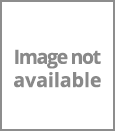Speak directly to the analyst to clarify any post sales queries you may have.
The isothermal bag container market is advancing as industries demand reliable, sustainable cold chain solutions aligned with urbanization and evolving logistics. For senior decision-makers, this analysis delivers precise insights to streamline procurement, strategy, and operational resilience in the isothermal packaging segment.
Market Snapshot: Isothermal Bag Container Market Growth Trajectory
The isothermal bag container market demonstrated steady expansion, growing from USD 1.05 billion in 2024 to USD 1.14 billion in 2025 and is projected to reach USD 1.91 billion by 2032. A compound annual growth rate (CAGR) of 7.67% underscores the sector’s robust momentum, as demand for advanced thermal protection intersects with multi-industry applications. Growth is being propelled by increasing urban mobility, sustainability mandates, and the escalating requirements of temperature-sensitive goods transport.
Scope & Segmentation of the Isothermal Bag Container Market
- Container Types: Backpack coolers, hard cooler boxes, lunch boxes, and soft bags are engineered to match the diverse operational demands of both commercial and domestic users.
- Material Types: Aluminum foil, EPE foam, PET foam, and PU foam provide essential insulation across applications, balancing durability, thermal consistency, and sustainability requirements for varied supply chains.
- Sales Channels: Products reach customers through convenience stores, specialty retailers, supermarkets, direct brand websites, and e-commerce, ensuring widespread availability and customer access.
- Key Applications: The sector addresses catering and events, grocery and meal kit delivery, restaurant logistics, pharmaceutical transportation, and recreational pursuits, including picnics, outdoor sports, camping, and road travel.
- End Users: Core segments include food service operations (cafes, catering firms, restaurants), households, pharmaceutical entities (clinics, hospitals, laboratories), and retail establishments (convenience stores, supermarkets, specialty retailers).
- Geographic Coverage: The analysis explores regional performance across the Americas, Europe, Middle East and Africa, and Asia-Pacific, providing granular insights into strategic countries such as the United States, China, Japan, Germany, and Brazil, among others.
- Leading Market Players: Thermo Fisher Scientific Inc., Pelican BioThermal LLC, Berry Global, Inc., Sonoco Products Company, Sealed Air Corporation, Cryopak Industries, Inc., Cold Chain Technologies, Inc., VA-Q-tec AG, Softbox Systems Ltd, and CSafe Global, LLC are covered in depth.
Key Takeaways for Senior Decision-Makers
- Sustained consumer emphasis on durable, portable, and environmentally responsible isothermal bag containers is shaping supplier selection and product development direction.
- IOT-enabled temperature monitoring and digital transformation increase end-to-end visibility, supporting proactive quality management and compliance in critical transport scenarios.
- Growth in eco-friendly insulation materials, spurred by evolving regulatory guidance, is driving business model adaptation toward recyclable and biodegradable alternatives.
- Complexity in global trade and shifting policies highlight the need for agile supply chain frameworks, favoring nearshoring and diversified procurement models to offset disruption risks.
- Collaboration among material science, logistics, and regulatory specialists is streamlining the process for commercializing innovative thermal packaging solutions.
- Emerging priorities across food safety, last-mile delivery, and the rigorous standards of pharmaceutical logistics are prompting tailored offerings and differentiation at the product level.
Tariff Impact: Navigating 2025 United States Tariffs
Upcoming tariffs on insulation foams and aluminum foil in the United States are shifting the market landscape. Manufacturers are responding by pursuing diversified supplier networks, which aims to secure continuity and restrain cost escalations. Buyers are leveraging long-term purchase agreements to minimize price volatility, while focused investment in alternative insulation technologies and regional production helps sustain market competitiveness under new cost pressures. These strategic adjustments create both challenges and opportunities for value chain optimization.
Methodology & Data Sources
This report synthesizes primary research from industry leaders with comprehensive secondary review of market publications and regulatory standards. Advanced statistical modeling underpins the analysis, and data is validated through interviews, case reviews, and scenario planning to ensure that strategic recommendations are evidence-based.
Why This Report Matters
- Enables leaders to address material, product, application, and regional trends for informed, agile strategy-setting in the isothermal bag container market.
- Supports responsiveness to rapid shifts in technological, regulatory, and supply chain dynamics, equipping senior teams for forward-looking adaptation.
- Offers actionable segmentation and regional intelligence, clarifying where targeted investment and expansion may yield the strongest returns.
Conclusion
The isothermal bag container sector is entering a phase marked by elevated standards in sustainability, integrity, and adaptability. Senior decision-makers can leverage this report to successfully navigate evolving market challenges and unlock new growth potential.
Additional Product Information:
- Purchase of this report includes 1 year online access with quarterly updates.
- This report can be updated on request. Please contact our Customer Experience team using the Ask a Question widget on our website.
Table of Contents
3. Executive Summary
4. Market Overview
7. Cumulative Impact of Artificial Intelligence 2025
List of Figures
Table Information
| Report Attribute | Details |
|---|---|
| No. of Pages | 189 |
| Published | October 2025 |
| Forecast Period | 2025 - 2032 |
| Estimated Market Value ( USD | $ 1.14 Billion |
| Forecasted Market Value ( USD | $ 1.91 Billion |
| Compound Annual Growth Rate | 7.6% |
| Regions Covered | Global |
| No. of Companies Mentioned | 11 |









